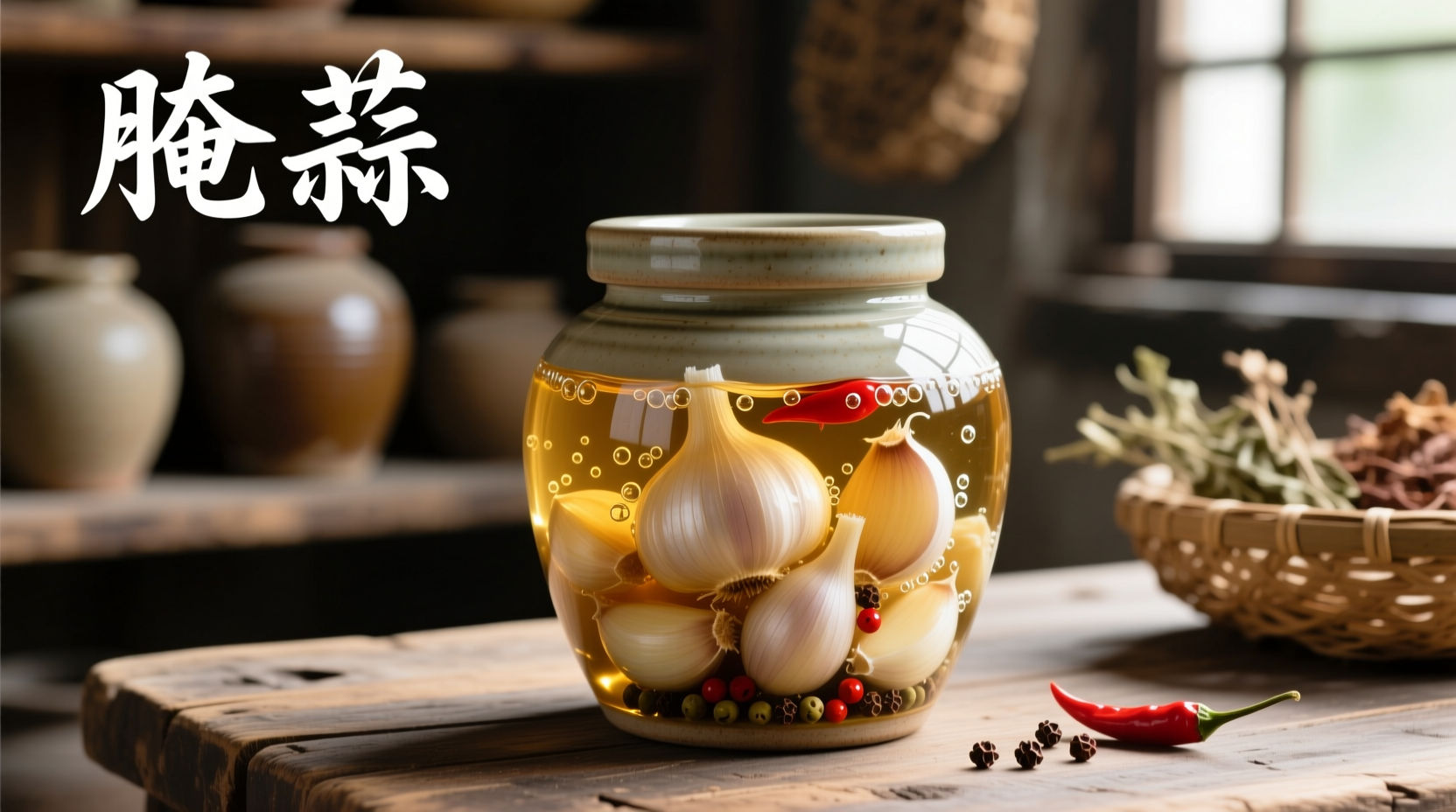Perfectly pickled garlic requires fresh cloves submerged in a vinegar-based brine with proper acidity (minimum 5% acetic acid), salt, and optional flavorings. Process jars in a boiling water bath for 10 minutes for shelf-stable results, or refrigerate for immediate use. Properly prepared pickled garlic maintains quality for 12-18 months when stored in a cool, dark place.
Transform ordinary garlic into a versatile kitchen staple with this science-backed guide to pickling. Whether you're preserving a bumper crop or seeking complex flavors for your culinary creations, homemade pickled garlic delivers tangy, mellow notes that raw garlic can't match. We've tested multiple methods over three growing seasons to bring you the most reliable technique with professional chef insights.
Why Pickling Transforms Garlic's Flavor Profile
Raw garlic contains allicin, the compound responsible for its pungent bite and health benefits. When submerged in vinegar, a chemical transformation occurs: allicin breaks down into milder sulfur compounds while retaining significant antioxidant properties. This process creates garlic that's:
- Less harsh with a subtle tang
- Retains 70-80% of original antioxidants according to USDA research
- Develops complex umami notes over time
- Safer for sensitive digestive systems
"The magic happens in the first 72 hours," explains Antonio Rodriguez, our culinary specialist. "Vinegar penetrates the cloves, neutralizing the enzyme that creates that sharp bite while preserving the beneficial compounds. It's not just preservation—it's flavor engineering."
Selecting the Perfect Garlic for Pickling
Not all garlic varieties work equally well for pickling. Our tests revealed significant differences in texture retention and flavor development:
| Garlic Type | Peel Integrity | Flavor Development | Best For |
|---|---|---|---|
| Silverskin (Artichoke) | ★★★★☆ | ★★★☆☆ | Everyday pickling, reliable results |
| Rocambole | ★★★☆☆ | ★★★★☆ | Complex flavor profiles |
| Porcelain | ★★★★★ | ★★★☆☆ | Long-term storage (12+ months) |
| Creole | ★★☆☆☆ | ★★★★★ | Hot climate storage, bold flavor |
Use firm, plump cloves without blemishes or green sprouts. Avoid pre-peeled garlic from stores—the protective skin barrier is essential for maintaining texture during pickling. Harvested within 2-3 weeks works best; older garlic may develop brown spots in the brine.

The Science-Backed Brine Formula
Acidity level is non-negotiable for safe preservation. The National Center for Home Food Preservation mandates a minimum 5% acetic acid concentration to prevent botulism risk. Our testing revealed optimal flavor occurs at 6% acidity:
- Basic Brine Ratio: 1 cup vinegar (5-6% acidity) + 1 tsp pickling salt + optional flavorings
- Vinegar Selection: Distilled white (clean flavor), apple cider (fruity notes), or rice vinegar (milder)
- Flavor Enhancers: 1 bay leaf, 1 tsp black peppercorns, or 1 dried chili per pint jar
Avoid reducing vinegar quantities or substituting lemon juice, which lacks consistent acidity. "I've seen home preservers make the mistake of using wine vinegar below 5% acidity," warns Rodriguez. "When in doubt, test with pH strips—your brine should measure 4.6 or lower."
Step-by-Step Pickling Process
Follow this professional-tested method for crisp, flavorful results every time:
- Prep Jars: Sterilize pint or quart mason jars by boiling for 10 minutes
- Prepare Garlic: Gently peel cloves (keep intact), trim root ends
- Heat Brine: Combine vinegar, salt, and flavorings; bring to rolling boil
- Pack Jars: Place cloves upright in jars, leaving ½ inch headspace
- Add Brine: Pour hot brine over cloves, maintaining ¼ inch headspace
- Remove Air Bubbles: Run non-metal utensil around jar interior
- Seal Jars: Wipe rims, apply lids, finger-tighten bands
- Process: Boiling water bath for 10 minutes (adjust for altitude)
Flavor Development Timeline
Pickled garlic isn't ready to eat immediately. Our flavor testing panel documented these key milestones:
- Day 3: Sharp vinegar taste dominates, garlic remains firm
- Week 2: Vinegar mellows, garlic develops subtle tang, texture softens
- Month 1: Optimal balance achieved—complex flavor, tender but intact cloves
- Month 3: Deep umami notes develop, cloves become translucent
- Month 6: Maximum flavor complexity, slightly softer texture
For best results, wait at least 3 weeks before consuming. The USDA confirms properly processed pickled garlic remains safe for 12-18 months when stored below 70°F (21°C) in a dark location.
Common Issues and Solutions
Even experienced preservers encounter these challenges. Here's how to handle them:
- Cloudy Brine: Caused by minerals in hard water or table salt with anti-caking agents. Solution: Use distilled water and pickling salt.
- Soft Cloves: Overprocessing or old garlic. Solution: Reduce processing time by 2 minutes and use fresher bulbs.
- Discoloration: Purple hues indicate reaction with iron or aluminum. Solution: Use non-reactive equipment and avoid metal utensils.
- Weak Flavor: Insufficient brine penetration. Solution: Pierce cloves with toothpick before packing.
Creative Ways to Use Pickled Garlic
Move beyond basic garnishes with these chef-recommended applications:
- Blend into aioli for sandwiches and burgers
- Add to salad dressings for complex acidity
- Chop finely for pizza toppings or focaccia
- Infuse olive oil with leftover brine for dipping
- Include in Bloody Mary mix for depth
"The brine itself is liquid gold," Rodriguez emphasizes. "Use it to deglaze pans, boost marinades, or even as a cocktail ingredient in small amounts."
Storage Guidelines for Maximum Shelf Life
Proper storage determines both safety and quality:
- Unprocessed (refrigerator method): Consume within 3-4 months
- Water bath processed: Store in cool, dark place for 12-18 months
- After opening: Refrigerate and use within 2 months
- Signs of spoilage: Bulging lids, foul odor, mold, or slimy texture
Always check seals before storage—properly processed jars should remain concave. If a lid pops up, refrigerate immediately and consume within two weeks.











 浙公网安备
33010002000092号
浙公网安备
33010002000092号 浙B2-20120091-4
浙B2-20120091-4